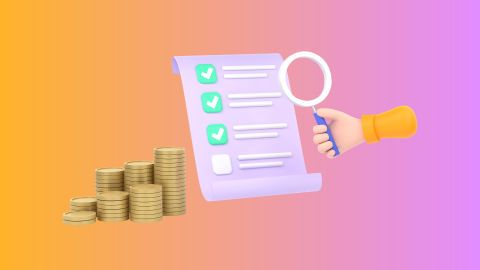Other definitions of liability
A liability represents the obligation or responsibility to fulfill a debt or duty to another party. In financial terms, this could involve owing money, such as income taxes that an individual owes to the government or sales taxes that a retailer collects from customers and must remit to local or state authorities. These financial obligations are a fundamental aspect of accounting, as they reflect the amounts that an entity is required to pay in the future, impacting its overall financial position.
Beyond financial debts, the concept of liability also extends to legal responsibilities. For instance, in the context of a civil lawsuit, liability refers to the potential damages or compensation that a person or business might be required to pay if found responsible for causing harm or loss to another party. Whether in financial or legal contexts, liabilities play a crucial role in understanding the obligations and risks that an individual or organisation faces.
How liabilities work
A liability typically refers to an obligation that one party owes to another, which remains unpaid or incomplete. In accounting terms, a financial liability arises from past business activities, such as sales, asset exchanges, or service transactions, that are expected to result in an outflow of economic resources in the future.
Liabilities are classified as either current or non-current based on when they are due. They may involve upcoming services or payments, including borrowings from banks, individuals, or institutions, whether short-term or long-term or any past transaction that has led to a financial obligation yet to be settled.
Different types of liabilities
Liabilities are generally classified based on when a business is expected to settle them. This timing helps determine whether they are short-term or long-term obligations. Below are the main types of liabilities:
Current Liabilities
Current liabilities are short-term financial obligations that a company must pay within one year. These are part of the daily operations and have a direct impact on a company’s liquidity and working capital.
They are often used in key financial ratios such as the current ratio, quick ratio, and cash ratio.
Working capital = Current assets - Current liabilities
Examples: Trade payables, bills payable, bank overdrafts, outstanding expenses, short-term loans, and creditors.
Non-current Liabilities
Non-current liabilities, also known as long-term liabilities, are obligations that are not due within the next 12 months. These typically support capital expenditures and long-term financial planning.
They play a role in evaluating a company’s financial strength, such as through the long-term debt-to-assets ratio, which shows how much of the company’s assets are financed by debt.
Examples: Debentures, mortgage loans, bonds payable, deferred tax liabilities, and other long-term borrowings.
Contingent Liabilities
Contingent liabilities are potential obligations that may or may not arise, depending on the outcome of a future event. Unlike current or non-current liabilities, these are not always recorded in the financial statements unless there is a strong likelihood (usually 50% or more) that the liability will occur.
A common example is a pending lawsuit. If it appears likely that the company will lose the case, it may record the potential financial impact as a contingent liability.
Difference between Current and Non-Current Liabilities
Feature
|
Current Liabilities
|
Non-Current Liabilities
|
Repayment Period
|
Due within one year or within the company’s operating cycle
|
Payable over a period exceeding one year
|
Examples
|
Accounts payable, wages, short-term borrowings, overdrafts, and taxes payable
|
Long-term loans, bonds payable, long-term lease obligations, and deferred tax liabilities
|
Purpose
|
Arise from day-to-day business operations to meet short-term financial requirements
|
Used to fund long-term investments, capital projects, or asset purchases
|
Security
|
Generally unsecured
|
Often secured by assets such as property or equipment
|
Types of liabilities based on categorisation
Based on categorisation, liabilities can be classified into five types: contingent, current, non-current, common (like mortgage and student loans), and statutes (like taxes payable).
Type
|
Description
|
Examples
|
Contingent
|
Potential liabilities dependent on future events or conditions.
|
- Legal claims
- Warranty obligations
|
Current
|
Liabilities due within one year or the normal operating cycle of the business, whichever is longer.
|
- Accounts payable Short-term loans
|
Non-Current
|
Long-term liabilities not due within the current accounting period.
|
- Long-term loans
- Bonds payable
|
Common
|
Widely encountered liabilities applicable to many individuals or businesses.
|
- Mortgage loans
- Vehicle loans
|
Statutes
|
Liabilities imposed by law or regulatory authorities.
|
- Taxes payable
- GST liabilities
|
Understanding these classifications aids in effective financial analysis and strategic planning.
Example of liabilities
Liabilities can take various forms in financial contexts. Some common examples include:
- Accounts payable: Account payable refers to the outstanding invoices or bills that a business owes to its suppliers for goods and services received but not yet paid for.
- Accrued expenses: These represent obligations that have been incurred but have not yet settled. They include costs like utilities or wages that are owed but not yet paid.
- Business loans: These refer to borrowed funds that a business must repay over time according to the agreed terms, including interest.
Each of these examples highlights the diverse nature of liabilities and their impact on financial management. Check your pre-approved business loan offer to manage your loan liabilities better.
How to find liabilities
Liabilities can be determined by either summing up all short-term and long-term debts or by using the accounting equation: Total Liabilities = Total Assets - Shareholder’s Equity. Both approaches are accurate, but the accounting equation offers a faster calculation if you already have the total assets and equity values on hand.
How to calculate liabilities
Calculating liabilities involves determining all the debts and obligations a company owes, which can be found on the balance sheet. To calculate total liabilities, you need to add both current liabilities and non-current liabilities.
Current Liabilities
- Identify all current liabilities: Review your company’s financial records to pinpoint all obligations that are due within the next 12 months or within the normal operating cycle of the business.
List common types of current liabilities:
- Accounts Payable: Amounts owed to suppliers for goods or services purchased on credit.
- Notes Payable: Short-term debt obligations, such as promissory notes, due within a year.
- Accrued Expenses: Expenses incurred but not yet paid, including salaries, wages, or interest payable.
- Unearned Revenue: Money received for goods or services that have not yet been delivered.
- Current Portion of Long-Term Debt: The portion of long-term loans that must be repaid within the next year.
- Other Short-Term Obligations: Any additional debts due within a year, such as taxes payable or other short-term liabilities.
- Calculate total current liabilities: Add up all the individual amounts listed to determine your total current liabilities.
Non-Current Liabilities
- Identify all non-current liabilities: Review the balance sheet to find all long-term obligations that are due in more than one year.
- Determine the balance for each liability: Check the current outstanding amount for each non-current liability you have identified.
- Calculate the total: Add together the balances of all non-current liabilities to get the overall total.
Liabilities vs. assets
Aspect
|
Liabilities
|
Assets
|
Definition
|
A financial obligation or debt owed to an external party.
|
A resource owned or controlled that provides future economic benefits.
|
Impact on Net Worth
|
Decreases net worth as debt levels rise.
|
Increases net worth by adding value to the company or individual.
|
Cash Flow
|
Leads to cash outflows to settle obligations.
|
Typically results in cash inflows through usage or eventual sale.
|
Location on Balance Sheet
|
Appears on the right side of the balance sheet.
|
Appears on the left side of the balance sheet.
|
Management Focus
|
Requires careful tracking and repayment to maintain financial stability.
|
Focuses on efficient use and growth of assets to generate revenue.
|
Liabilities vs expenses
Feature
|
Liabilities
|
Expenses
|
Definition
|
A financial obligation or debt that a company is required to settle in the future.
|
The costs incurred from using resources to generate revenue.
|
Timing
|
Recorded as a future obligation to be paid or settled.
|
Recognized as costs incurred during the current accounting period.
|
Financial Statement
|
Shown on the balance sheet as a claim against the company’s assets.
|
Reported on the income statement, reducing net income.
|
Relationship
|
Expenses can give rise to liabilities—for instance, if a service is received but not yet paid for, the cost is an expense and the unpaid amount becomes a liability (accounts payable).
|
Represents the immediate consumption of resources, whereas liabilities represent future payment obligations.
|
Examples
|
Accounts payable, loans, deferred revenue, accrued expenses.
|
Rent, salaries, utilities, cost of goods sold.
|
Financial ratios involving liabilities
Financial ratios play a crucial role in evaluating a company's financial health, particularly regarding its liabilities. Here are a few key ratios:
- Debt-to-Equity ratio: The debt-to-equity ratio compares a company's total debt to its shareholder's equity, indicating its leverage and financial risk.
- Current ratio: Measures a company's ability to meet short-term obligations with its current assets, providing insight into liquidity.
- Quick ratio: Also known as the acid-test ratio, assesses a company's ability to meet short-term obligations using its most liquid assets, excluding inventory.
These ratios help investors and analysts gauge a company's ability to manage its liabilities effectively and sustainably.
Accounting reporting of liabilities
Liabilities are reported on the balance sheet along with assets and equity, providing a snapshot of a company's financial health at a specific point in time. Regular, accurate recording of liabilities is a vital part of effective financial management and compliance with accounting standards.
If you are exploring financing options to expand your business, consider a Business Loan to support your financial endeavours. Evaluating the available lenders based on their business loan interest rate can help you make more informed and cost-effective financing decisions.
Conclusion
In conclusion, liabilities play a pivotal role in financial management, providing a comprehensive picture of an entity's financial health. Analyzing and managing liabilities effectively is essential for maintaining solvency, ensuring positive cash flow, and making informed financial decisions. Whether current or long-term, liabilities are integral to the intricate web of financial dynamics that shape an organization's success.
Helpful resources and tips for business loan borrowers





